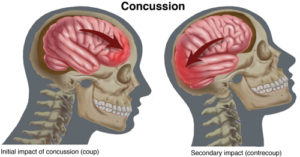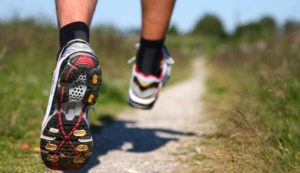
Fall has arrived! If you’re a homeowner, there is likely some lawn work that you’re trying to get done – and raking leaves usually tops the list. This is a physically demanding activity that involves twisting, reaching, pulling, bending and lifting repetitively and with weight. If these movements are not done properly, and if underused muscles are being overtaxed in a short period of time, it can lead to sore and stiff muscles, painful shoulders and most commonly it can cause injury to the mid and lower back.
Here are some helpful tips
:
Stretch before you rake
:
Warm up with light exercise before heading out to rake. Take about 10 minutes to gently stretch your neck, shoulders, torso, back, wrists and hips prior to raking. (Our physio’s can provide you with some great stretches to help you with this.)
Use your legs
: When you’re bagging the piles of leaves, (which can often be heavy because they are wet) make sure you bend your knees. Keep your back straight and let your legs do the bulk of the work – not your back.
Avoid twisting from the waist
: People often plant their feet and over-rotate their spine which can really cause stress and strain to the lower back. Pivot towards your forward foot first, your hips should follow next, then the rest of your body.
Use the right equipment
: The rake you use should be the right size for your height and strength. The width of the rake head doesn’t much matter. A light weight, ergonomic rake that has bent or side handles ensures that your elbows are slightly bent and helps with good posture. Light weight plastic leaf rakes are also a good option.
Pace yourself
:
Section off areas of your yard and complete in stages, especially if it is a large property. Take frequent breaks, and as with any physical activity, drink plenty of water before, during and after lawn work.
If you do experience low back pain or neck pain, our therapists can identify and safely treat your pain, and provide you with strengthening exercise to help your spine and improve your posture.
Contact us to book an appointment.
STAY FIT, STAY HEALTHY, STAY ACTIVE
More

Concussion is a mild traumatic brain injury (mTBI) that can damage brain tissue and change the chemical balance of the brain.
Concussion may cause physical, mental and emotional symptoms and problems, both short term and long term.
Every concussion is considered a serious injury by health care providers.
Causes of concussions
Car accidents (head impact, or whiplash)
Work accidents (falls, head trauma)
Playground accidents (falling from a slide or swing)
Sport injury to the head or neck
Any type of fall or direct blow to the head, face or neck
Violent events (physical abuse which the head is shaken, being too close to an explosion)
More

-
Never carry more than 10% of your body weight
-
Always wear a backpack over both shoulders
-
Pack heavy items closest to your spine
We often associate back pain with growing older, but these days many children and young people are experiencing back pain discomfort too. Often, the cause of the back pain for children is a result of carrying excessive loads to and from school in ill-fitting backpacks.
What happens when you wear a heavy backpack?
The spine is made of 33 bones called vertebrae and between the vertebrae are discs that act as natural shock absorbers. When a heavy backpack, with too much weight is placed on the shoulders of a child it can pull them backwards. To compensate this imbalance, the child may bend forward at the hips or arch the back, which can cause the spine to compress the discs unnaturally.
More
Reduce the Risk of Running Injuries

Now that the warmer weather is here, it’s very appealing to get outside and enjoy the fresh air – and for many people that enjoyment includes running. Running is really a fabulous form of cardiovascular exercise, but unfortunately it can also lend itself to some very common injuries. Here are a few tips to keep you running healthy:
More
It’s great to see more kids than ever involved in athletics and organized sports. But research shows us that sport is the main cause of injury in adolescents.
Active growing children will go through normal aches and growing pains. The pain usually only lasts a few days, they are in mild discomfort, and it doesn’t really inhibit their activity. Often rest or a few days off sport will help these cases.
But if children are experiencing the following symptoms…
Visit your physio or MD for diagnosis and treatment.
Pain that lasts over 4 days
Increasing sharp pains
Pain that gets worse with activity
Pain that stops participation
Limping or favouring the injury or body part
Not sleeping well
Redness or swelling around the area – or talk of numbness
Most common injuries in children are: ankle sprains, wrist sprains or fractures, sore backs from poor posture, scoliosis and knee pain.
Understanding kid’s physical abilities during different stages of their lives is the best way to help support them to stay active and safely develop their athletic abilities. It can also help parent’s understand and detect if their child may have physical restrictions or an injury that needs to be treated by a physiotherapist.
TIP TO REMEMBER: Early treatment results in less time away from sport, and generally less treatment.
More




